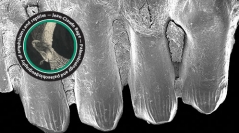

 Comptes Rendus Palevol
20 (15) - Pages 253-275
Comptes Rendus Palevol
20 (15) - Pages 253-275We describe here new amphibian and reptile remains from three Oligocene localities of Turkey. Two of the localities (Kavakdere and Kocayarma) are situated in southeastern Europe and the other one (Kargi 2) in Anatolia, both areas where Oligocene herpetofauna is practically almost unknown. The material consists of albanerpetontids, pelobatid anurans, turtles, crocodylians, lacertids, scinciformatans, anguines, and “tropidophiids”. Albanerpetontids are for the first time identified in southeastern Europe, with the material being reminiscent of the younger species Albanerpeton inexpectatum Estes & Hoffstetter, 1976; the material potentially represents the oldest record of that species. Pelobatids, scinciformatans, and “tropidophiids” represent the oldest occurrences of these clades in the northeastern Mediterranean. The anguine genus Ophisaurus Daudin, 1803 is identified for the first time in the Paleogene of Eastern Europe. The “tropidophiids” are referred to two genera, Falseryx Szyndlar & Rage, 2003 and tentatively also to Platyspondylia Rage, 1974, with the latter having been so far exclusively known from western and central Europe. The role of a potential southern dispersal route of taxa among Asia and Europe, involving the area of southern Balkans and Anatolia, similarly to what has been recently demonstrated for mammals, is highlighted also for amphibians and reptiles.
Albanerpetonidae, Anura, Testudines, Crocodylia, Squamata, Oligocene, biogeography